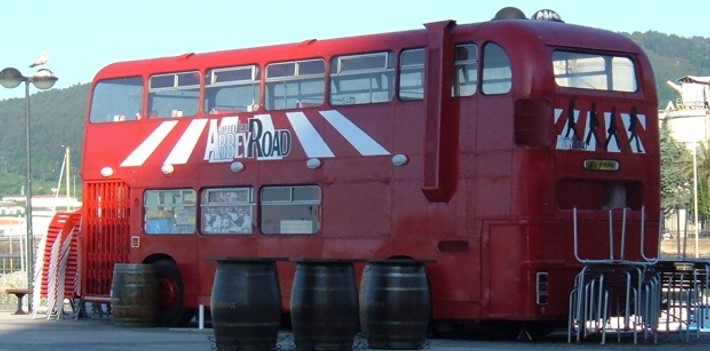Module 4: Folk Culture and Popular Culture
Section outline
-

What is culture? Culture is learned behavior. Humans teach it to one another through mimicry or lessons. Humans learn behavior to meet their basic needs for food, water, air, shelter, and companionship. How we manifest those behaviors is expressed differently depending on where we live. How you relate to the rest of the world can be considered your “culture”. One benefit of this learned behavior is that it can help answer questions. Some of the questions that are answered are philosophical or ideological, for example, “Where did we come from?” or “What is acceptable behavior?” Other questions revolve around daily life. “How do we secure shelter, clothe ourselves, produce food, and transmit information?” Culture provides us with guidance for our lives. It both asks and answers questions. Children, from an early age, start asking “What is my place in the world?” Culture helps to answer that.
Figure 4.1 | Double Decker Bus
Double-decker bus referencing the Beatles in Ferrol, Spain near the historic Camino de Santiago. This is the intersection of two iconic cultural symbols. Both the bus and the pilgrimage route invite the public to take journeys, whether sonic or geographic.
Author | Dominica Ramírez Source | Original Work License | CC BY SA 4.0
Upon completion of this module, you will be able to:- Describe: the origins and diffusion of culture and globalization (MLO 1)
- Explain: how culture changes across space and time (MLO 2)
- Describe: popular and folk culture, diffusion, and the changing pace of globalization (MLO 3)
- Link: Globalization and cultural conflict (MLO 4)
To achieve these objectives:
- Read the Module 4 Introduction
- Read Chapter 4: Folk Culture and Popular Culture
- Complete the Assignment 4, Discussion questions, and review Chapter 4 figures
You will find the following resources and activities in this module at the Pressbooks website. Click on the links below to access or complete each item.
-
Louisiana's Traditional Cultures: An Overview
-
There are four federally recognized tribes in Louisiana. The State of Louisiana recognizes a total of fifteen tribes in the state. Links to individual tribes' websites are included at the bottom of this article.
Background Colour
Font Face
Font Kerning
Font Size
Image Visibility
Letter Spacing
Line Height
Link Highlight
Text Colour
